
Xplor reconnects kids to nature and helps them find adventure in their own backyard. Free to residents of Missouri.




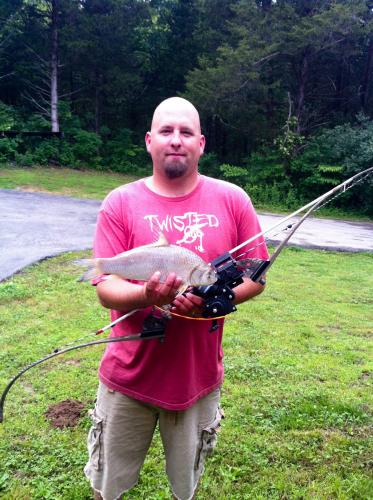


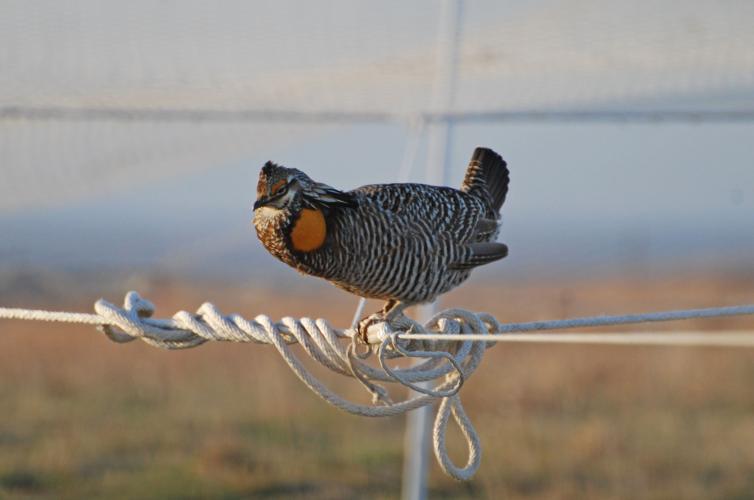


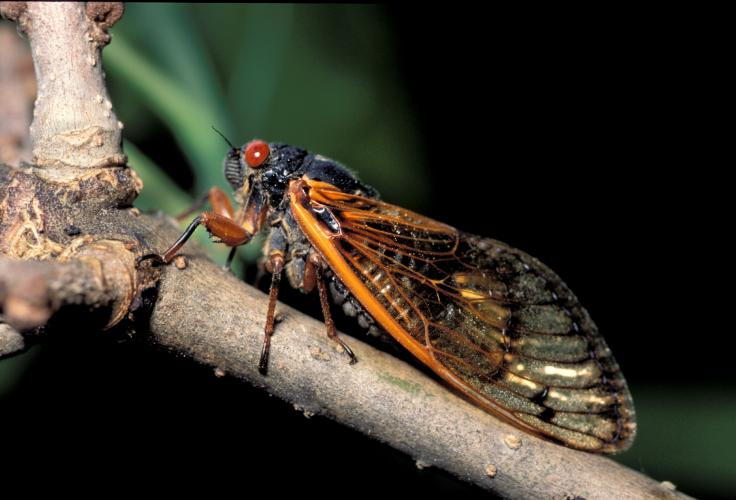
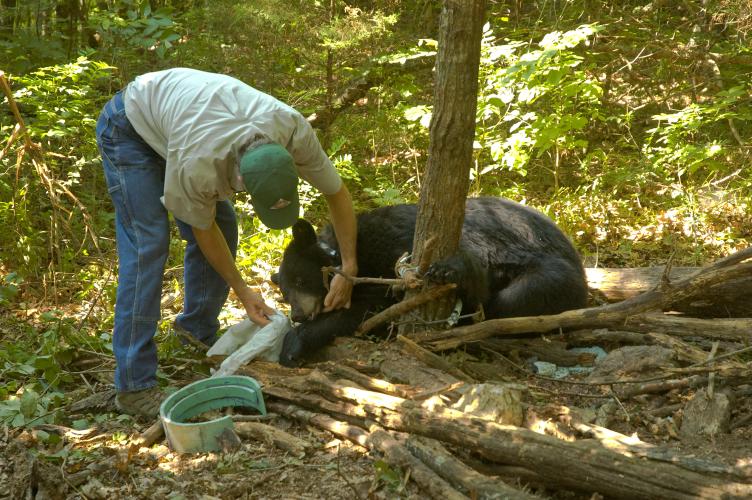

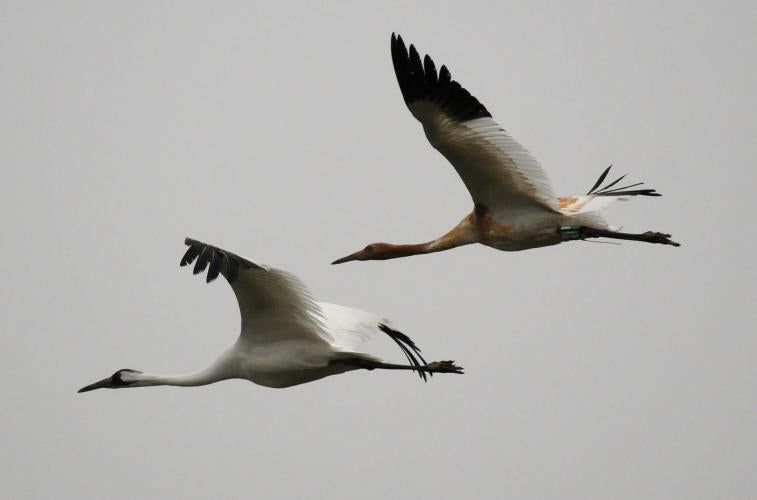

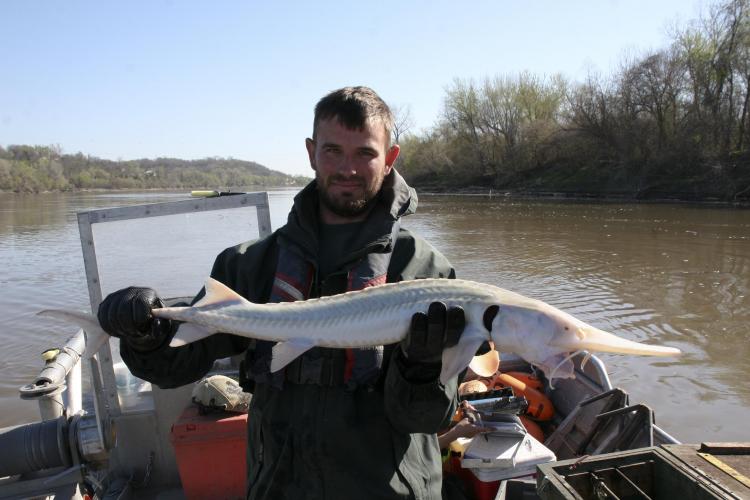

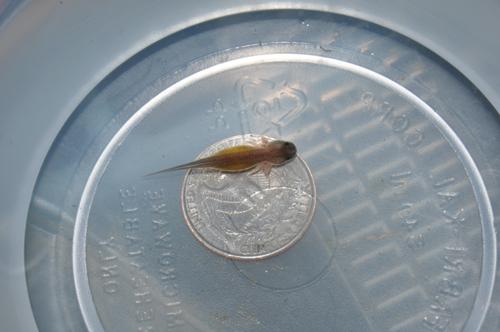









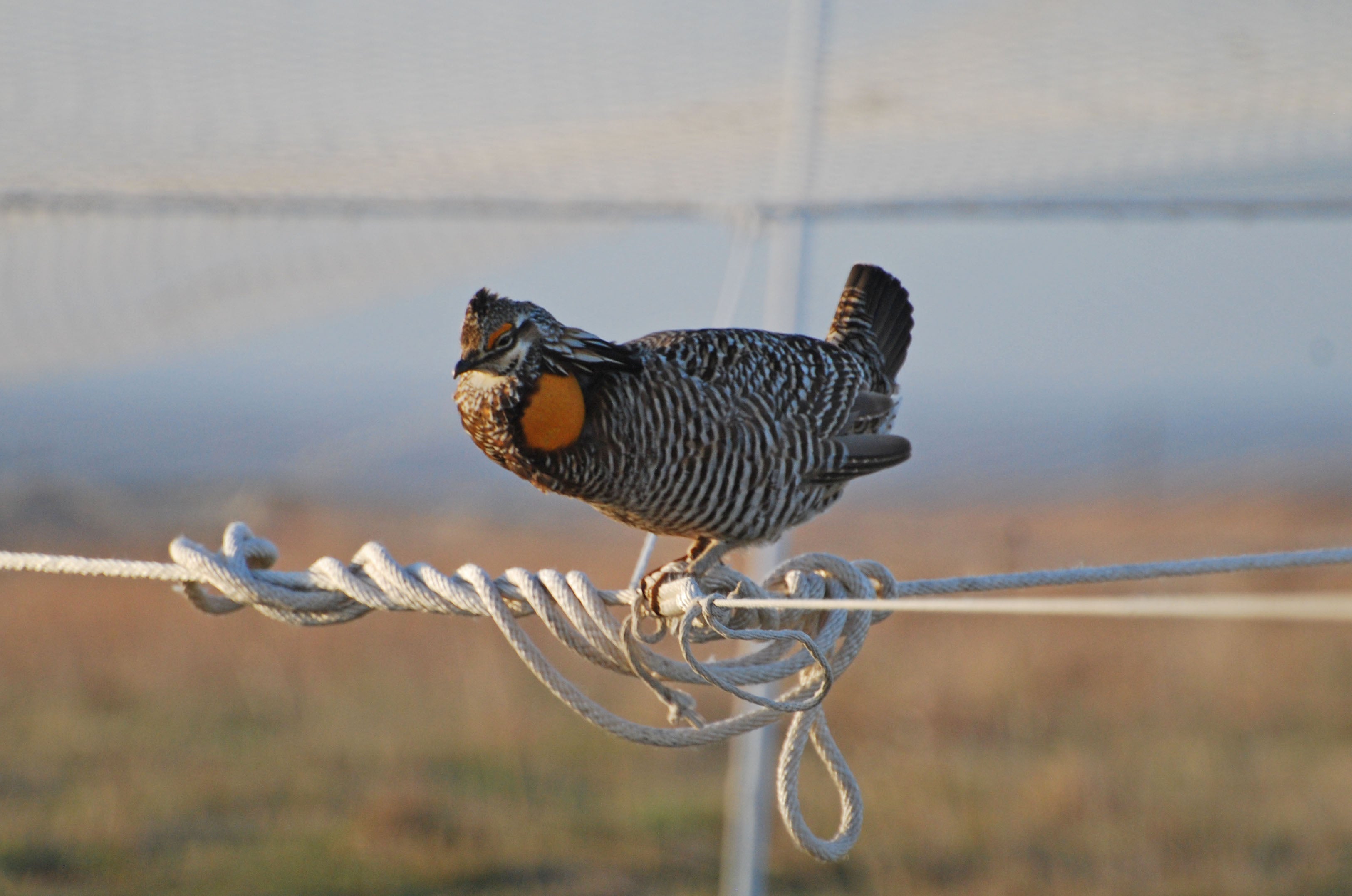


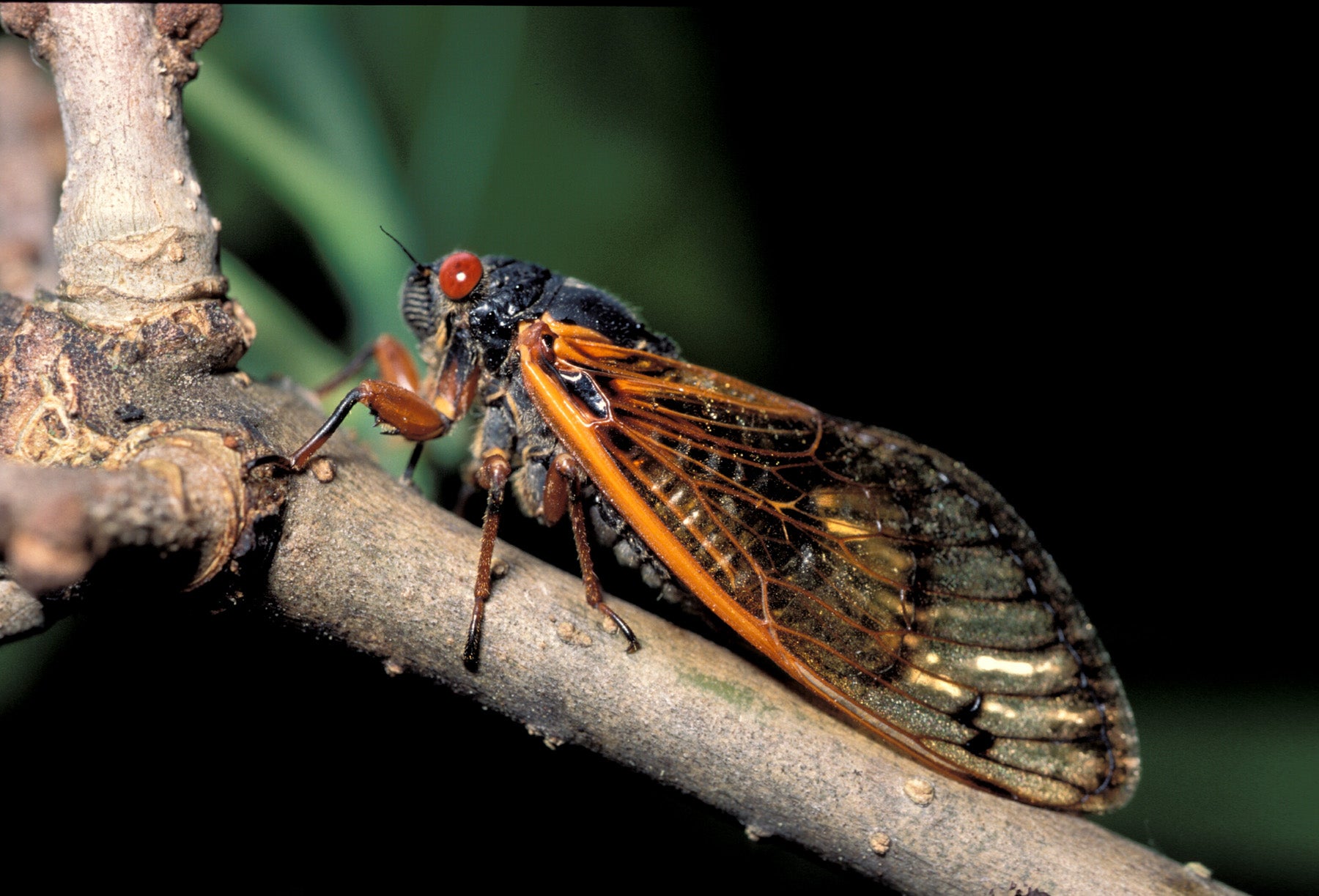
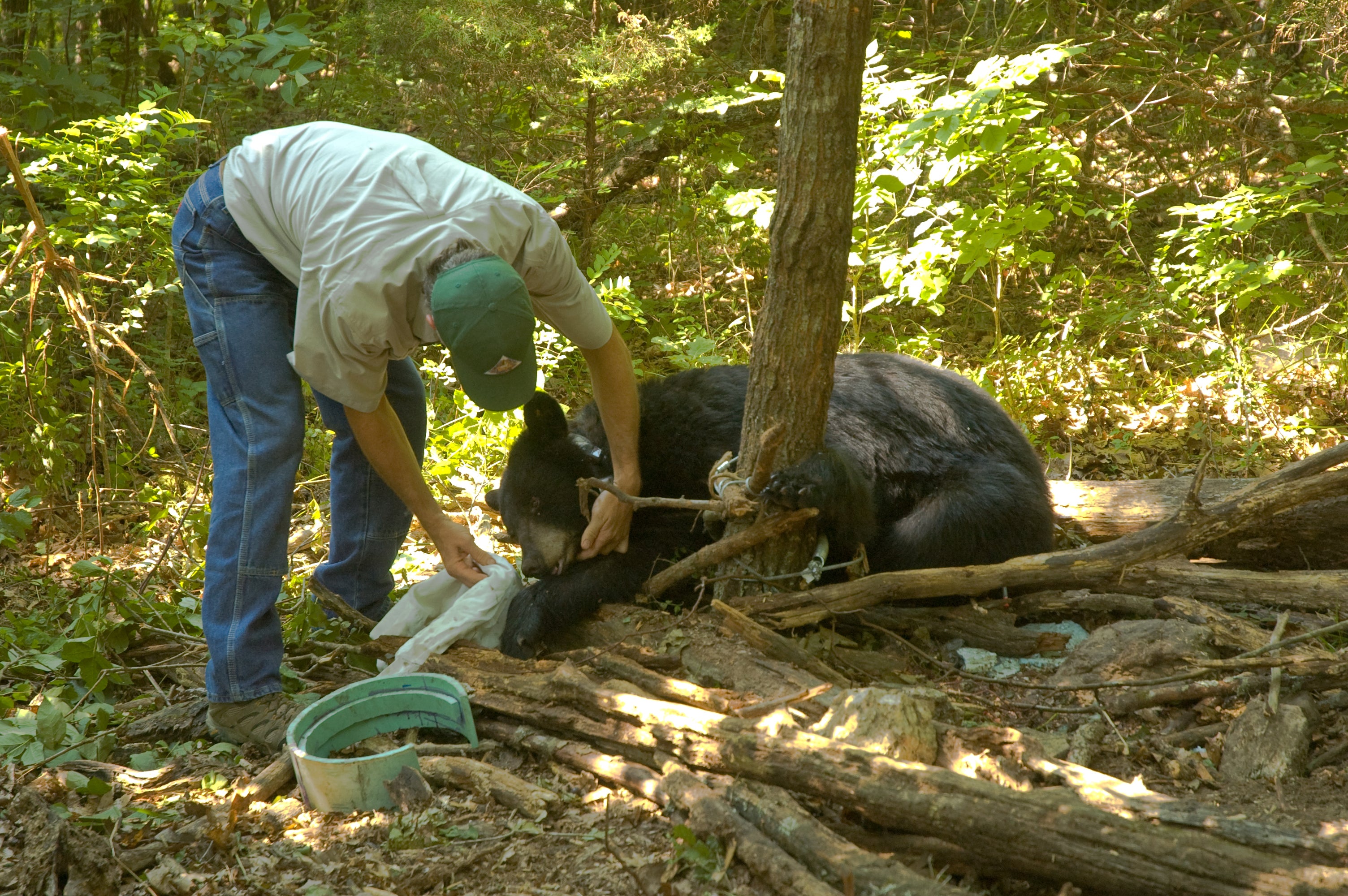





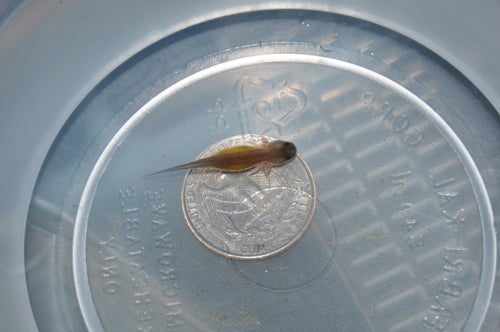

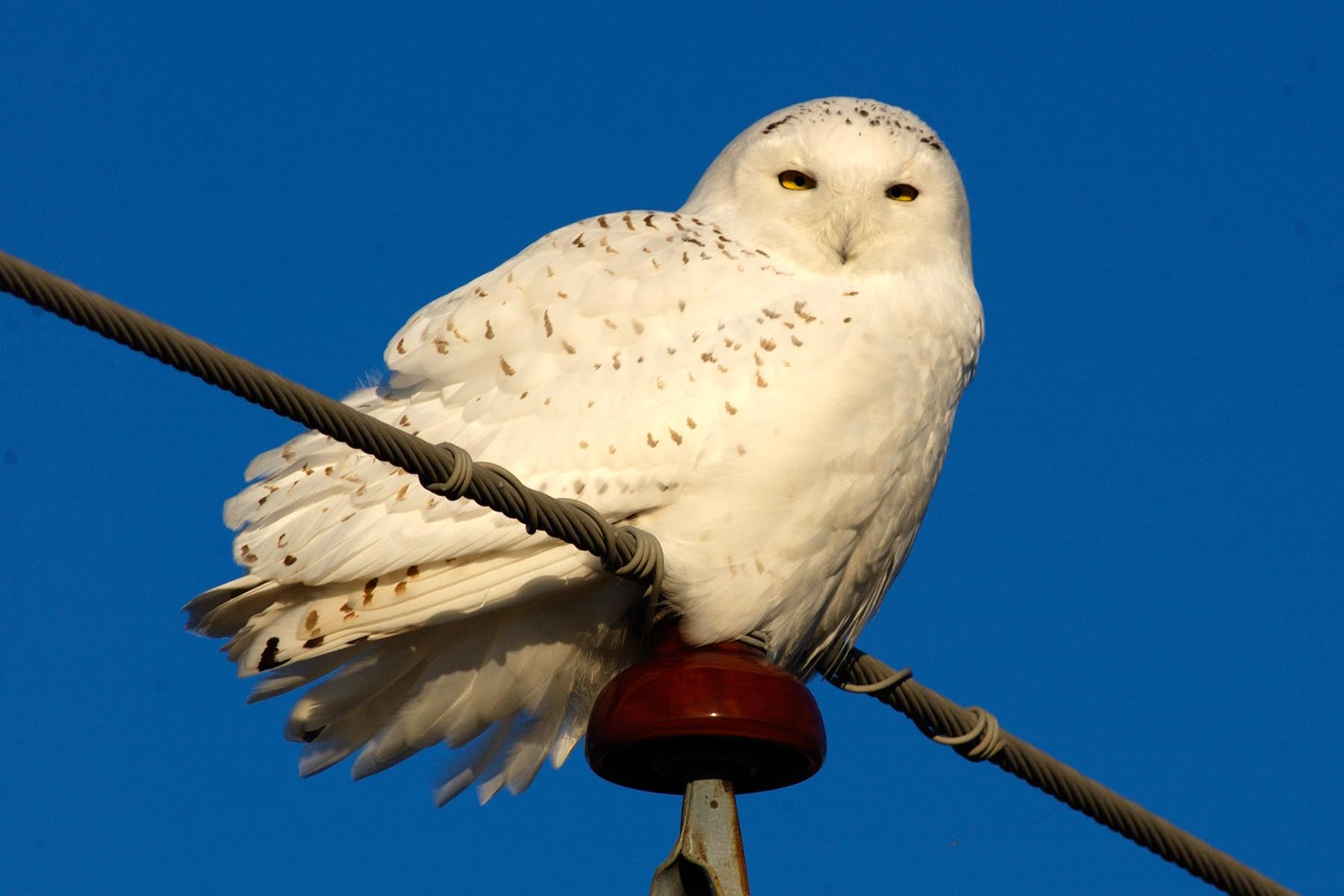
JEFFERSON CITY – Conservation has a place in Missouri’s news mix every year, but 2011 will go down in history for more than the fact that the Missouri Department of Conservation began its 75th anniversary celebration in November. Forests, fish and wildlife had a particularly prominent place in 2011 news.
WILDLIFE RESTORATION
2011 began on an exciting note, as MDC employees and workers from the Kentucky Department of Fish and Wildlife Resources captured the first elk for Missouri’s infant elk-restoration program. The juvenile bull soon had company, as dozens of yearling bulls and cows arrived at the holding pen in the Appalachian Mountains of eastern Kentucky. Thirty-four elk made the trip to Missouri, arriving at Peck Ranch Conservation Area (CA) May 5. By June, elk were roaming Peck Ranch, and newborn calves were taking their first wobbly steps. GPS technology has enabled biologists to track individual animals’ movements and learn more about their habitat preferences. The return of elk to Peck Ranch led to a significant increase in visitation to Peck Ranch CA, bringing added tourism business to area towns. As the year ended, MDC workers were preparing for the second round of trapping in Kentucky.
In another endangered-species restoration story, MDC biologists brought 78 prairie chickens from Kansas to Wah’Kon-Tah Prairie CA in west-central Missouri last spring. Thanks to four years of reintroduction work and habitat management that includes tree removal and prescribed burning, male prairie chickens once again are booming on Wah’Kon-Tah Prairie. Like the elk, Missouri’s newest feathered residents carried radio transmitters to aid in tracking their movements. Prairie chickens once numbered in the hundreds of thousands in western Missouri. Today the Show-Me State’s population of the birds have dwindled to 100 or so, due to habitat changes.
In November, the St. Louis Zoo and MDC announced the first successful captive breeding of hellbenders in the world. The decade-long cooperative effort yielded more than 180 baby hellbenders, which will be reared to maturity before being released in streams where they were found historically. Rivers in south-central Missouri and adjacent Arkansas once supported up to 8,000 Ozark hellbenders. Today, fewer than 600 exist in the world—so few that the U.S. Fish and Wildlife Service added the amphibian to the federal endangered species list.
FISHING RECORDS
• Twelve-year-old Hayden Crouch of Bradleyville set the first Missouri state fishing record of 2011 by gigging a 1.5-pound gizzard shad on Beaver Creek in Taney County. It also was the first state record for that species.
• Gene Swope, Excelsior Springs, was snagging for paddlefish with grandsons Garron Grass and Justin Swope near the Old Oar House Inn at Lake of the Ozarks on April 23 when he snagged a 106-pound bighead carp. A 35-minute tussle ensued. When Swope finally brought in the 4-foot, 8-inch fish, it took the combined strength of all three anglers to wrestle it into the boat.
• Derek S. DePew of DeSoto set Missouri’s first-ever record for highfin carpsucker when he shot a 1-pound, 6-ounce specimen during a bowfishing tournament on the Meramec River May 21.
• Bruce Cunningham of Fordland was fishing for striped bass for the first time in his life when he hauled a 60-pound, 9-ounce striper from Bull Shoals Lake. Later he recalled that his younger brothers had convinced him to join them on the fishing trip, saying “You’re not going to believe this until you try it.” Bull Shoals is a striped-bass mecca right now, thanks to a one-time stocking by the Arkansas Game and Fish Commission in 1998. That year, a mix-up resulted in the stocking of 19,000 striped bass.
• Eric Whitehead of Puxico was bowfishing with his wife, Sara, from a boat on Wappapello Lake in Wayne County on Oct. 8 when he shot 9-pound, 15.5-ounce spotted gar.
Missouri is renowned for its fishing resources. The International Game Fish Association reports 17 current world records from Missouri. The oldest is a 2-pound, 2-ounce green sunfish caught in 1971. The newest is an 8-pound, 3-ounce shortnose gar caught in 2010.
More information about Missouri fishing records is available at mdc.mo.gov/fishing/reports/records.
UNUSUAL WILDLIFE SIGHTINGS
In November, a pair of whooping cranes turned up near Neosho, giving birdwatchers there a rare glimpse of this federally endangered species. In December, bird lovers across the state reported sightings of trumpeter swans, the largest waterfowl species in the world.
In December, hunters at Eagle Bluffs Conservation area reported taking black-bellied whistling ducks, a species normally not seen farther north than the extreme southern United States. Hunters and bird watchers in several parts of Missouri reported trumpeter-swan sightings.
Also in December, Missouri experienced the largest number of snowy owl sightings on record. Snowy owls normally inhabit the high arctic region of Canada and Alaska. However, in years when populations of their prey – mainly lemmings – crash, the birds are forced to travel south. Missouri experienced such mass migrations, known as irruptions, in the 1970s and 1980s, but the current phenomenon far exceeds previous ones.
Snowy owls are similar in size to great horned owls, which are common in Missouri. However, snowy owls are much lighter colored and have rounded heads. Most of the snowy owls in Missouri now are juveniles, and many may be near starvation. They are not accustomed to automobiles, and often land on highways and fail to flee at the approach of cars.
MDC confirmed 14 mountain lion sightings in 2011. That is more than all previous confirmed sightings combined. Three of the cougars were killed by hunters or landowners. All three were juvenile males, which supports the theory that cougars seen in Missouri are mostly young males dispersing from established populations to the west. Since 1994, MDC has documented mountain lion sightings in 17 counties. Missourians are encouraged to call the nearest MDC office and report mountain lion sightings with physical evidence, such as photos, tracks, hair, scat or prey showing signs typical of a mountain lion attack. For more information, visit mdc.mo.gov/discover-nature/wildlife-sightings/mountain-lions.
Following is a month-by-month recap of other 2011 conservation news.
JANUARY
A harvest of 1,292 deer during the late youth portion of deer season pushed the firearms harvest to 231,513. The archery deer harvest put Missouri’s 2010-2011 deer harvest over 270,000.
FEBRUARY
MDC held open-house forums at its cold-water fish hatcheries to alert anglers and boaters to the threat posed by Didymosphenia geminata, an alga also known as didymo or “rock snot.” Didymo forms large, thick mats on the bottom of lakes and streams, smothering other aquatic lift. Didymo has been found just south of the Missouri-Arkansas border in the White River. The most likely ways for didymo to spread into Missouri is via recreational equipment such as boats, lifejackets and fishing gear, particularly porous-soled waders.
A regulation prohibiting the use of waders or footwear with felt or other porous soles in trout parks and other specific trout waters goes into effect March 1. To find out how to convert felt-soled waders to comply with the new regulation, watch the video at http://bit.ly/rRLejr.
Adapting waders is just one step toward solving the problem of spreading rock snot. It still is vital to check and clean or dry all waders and all other gear that have had contact with the water.
MARCH
MDC launched the new e-Permits system March 1, enabling hunters, anglers and trappers to purchase, print and immediately use most permits. By the end of the year, MDC had issued more than 140,000 permits online, an increase of nearly 400 percent from the same period in 2010. When fully implemented, e-Permits will reduce the cost of issuing permits by approximately $500,000 annually.
Between March and April, MDC held 15 workshops at locations around the state to get hunters’ ideas about waterfowl zone boundaries and season timing for the next five years.
MDC completed efforts to salvage timber downed by windstorms in 2007 and began timber harvests in the second phase of its 100-year Missouri Ozarks Forest Ecosystems Project (MOFEP). The project is designed to discover how different management practices affect the entire forest ecosystem, including plants, animals and soil.
APRIL
Conservation agents worked alongside emergency personnel conducting flood evacuations and rescue work in southeastern Missouri in April. The agents and their boats were priceless assets in flood-relief efforts. One rescue involved Direct TV employee Jason Wahl, of East Cape Girardeau, IL, who was plucked from atop his flooded van by Conservation Agent Mic Plunkett
Conservation Agent Eric Heuring and Butler County Fire Department personnel rescued 13 people between 3 and 10 p.m. one day.
MDC fisheries workers netted wild-spawned pallid sturgeon from the Missouri River. The pallid sturgeon is an endangered species that state and federal wildlife agencies have been working to recover. Those efforts involve stocking hatchery-reared pallid sturgeon and trying to figure out what habitat changes might be limiting the animals’ reproduction. Finding pallid sturgeon in the wild enables biologists to gather important information about habitat preferences and add genetic diversity to captive-breeding efforts.
MDC published, Discover Missouri Natural Areas, offering Missourians a glimpse of the Show-Me State’s ecological diversity with profiles of 50 natural areas. This and other MDC publications are available at mdcnatureshop.com/.
Also during the year, the Conservation Commission approved the designation of 398-acre Fern Nook Natural Area on Little Black Conservation Area in Ripley County, 13-acre Great Spirit Cave Natural Area In Pulaski County and 1,280-acre Western Star Flatwoods Natural Area on the Mark Twain National Forest in Phelps County.
MAY
MDC opened a new Kansas City regional office on May 2. The office at 12405 S.E. Ranson Road near Lee’s Summit consolidates services for greater efficiency and improves services for visitors at the James A. Reed Memorial Conservation Area.
MDC workers provided food for deer and turkeys stranded by floodwater at Towosahgy State Historic Site in southeastern Missouri in May, helping them survive until they could find natural forage again.
Bear trapping got underway in southern Missouri as MDC continued its intensive effort to gather information about Missouri’s growing black-bear population. To date, 47 bears have been captured with foot snares and box traps, fitted with GPS transmitters and released back into the wild.
The study, which is being funded through the U.S. Fish & Wildlife Service’s Wildlife Restoration program with help from Safari Club International; will provide information about the movement patterns, population densities, habitat preferences and overall numbers of Missouri bears. Data from the study will enable MDC to scientifically manage bear populations through regulated hunting, so that bears continue to thrive and expand into suitable habitats with minimal human conflict.
(extracting_sow_from_snare.jpg)
Two-hundred and eighty-six youths in grades 4 through 12 represented Missouri at the National Archery in the Schools Program (NASP) national tournament, competing against 6,445 archers from 33 other states. For more information about the Missouri National Archery in the Schools Program, visit www.missouriconservation.org and search “MoNASP.”
Hunters checked 42,226 turkeys during the spring turkey season.
MDC chainsaw crews and conservation agents were in the thick of relief work following the disastrous tornado in Joplin. They cleared roads for emergency personnel and then helped with rescue and clean-up efforts. That work continues, as MDC foresters help the city assess and replace lost trees.
JUNE
June found Missourians investing in earplugs, as most of the state experienced a major emergence of periodical cicadas. When a brood emerges, as many as a million noisy male cicadas can gather in trees over a single acre and join in a piercing chorus of mating calls. Their combined voices create an unforgettable din, drowning out lawnmowers and making normal conversation impossible.
JULY
July saw the publication of MDC’s latest book, Cooking Wild in Missouri. The book immediately garnered acclaim for its blend of diverse recipes outdoor lore and lush illustrations. Serious “foodies” appreciate the effort to promote locally grown, seasonal foods, including wild game and fish, nuts, berries and mushrooms. It can be purchased for $15 at MDC nature centers and regional offices, or you can order online at www.mdcnatureshop.com.
Surveys conducted during the summer showed that 23 lakes and the Gasconade River, all considered at high risk for zebra-mussel infestation, were free of the destructive invasive mollusk. MDC checks high-risk waters, along with less at-risk waters, for zebra mussels each year.
The only Missouri waters currently known to have zebra mussels are Lake of the Ozarks, Lake Taneycomo, upper Bull Shoals Lake, Lake Lotawana in Jackson County, the Missouri and Mississippi rivers, the lower Meramec River and the Osage River below Bagnell Dam.
Knowing which lakes and streams have zebra mussels empowers Missourians to avoid spreading the invasive mussel. For more information on zebra mussels and other invasive species, visit www.missouriconservation.org.
AUGUST
The Missouri River remained at flood level throughout the summer, due to unusually heavy snowfall in the Rocky Mountains the previous winter coupled with record rainfall in the river’s upper watershed in the spring. The high flows breached many levees, taking a heavy toll on farm communities and conservation areas in the flood plain.
Meanwhile, much of the rest of Missouri was suffering a drought. Dry weather was a mixed bag for Missouri wildlife. Wetland areas in west-central Missouri went dry, limiting waterfowl habitat. For quail, turkeys and other ground-nesting wildlife, however, a dry summer was a welcome change from the record-breaking rains of 2008 through 2010. MDC’s annual survey of turkey reproduction showed the best nesting success in 10 years. Dry weather also helped MDC make substantial progress on construction projects, including wetland renovations at Duck Creek CA and improvements to fish-rearing facilities at Bennett Spring Hatchery.
Missouri’s endangered prairie chickens also got a major lift from dry weather, along with continued refinement in MDC’s grassland-management techniques. Hens on MDC-managed prairies experienced a nesting success rate of nearly 80 percent.
Conservation agents sprang a trap on catfish poachers in August, arresting hand-fishers who target large catfish as they guard eggs in nesting cavities. They also pulled 142 illegal “noodling” boxes or containers from Truman Lake.
The Missouri Conservation Heritage Foundation (MCHF) launched a successful fundraiser to improve the fishing and viewing platform just upstream from the scenic bridge at Bennett Spring State Park. As of Dec. 28, MCHF had raised more than $38,000 toward its $45,000 goal. Donations can be made at www.mochf.org, or by sending checks to MCHF, PO Box 366, Jefferson City, MO 65102-0366. Donations should be marked “Bennett Spring Platform.” Donors at $1,000 and above will receive a framed print of the 1995 Missouri Trout Stamp signed and numbered by wildlife artist Chuck Witcher. The print features a beautiful brown trout. The trout stamp of the same number is also mounted with the print. A permanent plaque at the structure will recognize donors at two levels, $1,000 and $5,000 and above.
SEPTEMBER
MDC held a dedication ceremony for the McGee Family CA. The CA, comprising nearly 1,000 acres near Plattsburg, was a bequest from Kansas City businessman Thomas F. McGee Jr., to be preserved as a natural area and enjoyed by the public.
Missourians celebrated National Hunting and Fishing Day at workshops sponsored by MDC at its staffed shooting ranges around the state. The events are part of MDC-sponsored management programs and hunting seasons that have made Missouri the nation’s leader in hunter recruitment. A survey commissioned by the National Shooting Sports Foundation showed Missouri had the highest hunter-replacement ratio in the nation.
OCTOBER
Missouri got a new state record in October, when a 48-foot-tall tree with a trunk girth of 23 feet was certified as the new state champion white mulberry (Morus alba). Philip Moore’s farm in Cass County is home to the tree, whose average crown width is 57 feet. A list of Missouri state champion trees is available at http://1.usa.gov/tqbBPS.
NOVEMBER
Nov. 3 marked the 75th anniversary of Missourians’ historic vote to establish an apolitical conservation agency under the direction of a four-person commission appointed by the governor. Seventy-one percent of Missouri voters approved Proposition 4, the largest margin of any constitutional amendment before or since.
Six schools cut ribbons on Fuels for Schools projects. The ceremonies commemorated new biomass thermal energy heating systems built with $6 million in grants under the American Reinvestment and Recovery Act and administered by the USDA Forest Service. Besides reducing schools’ heating costs, the projects will help create healthier, more productive forests by providing a market for material removed during timber-stand improvement work.
Hunters checked 190,089 deer during Missouri’s 11-day November firearms deer hunt, surpassing the 2010 figure. The Show-Me State’s robust firearms deer harvest is proof of a healthy deer herd that provides economic as well as nutritional and social benefits to all Missourians. Deer hunters spend approximately $700 million on their sport annually, generating more than $1 billion in business activity. In all, deer hunting supports 11,000 Missouri jobs.
Luke Boenker, 54, of Maryland Heights, became the first hunter in modern times to take a deer in Missouri using an atlatl, an ancient spear-throwing device. He harvested a four-point buck just after 4 p.m. on Nov. 12 while hunting from a tree stand on private property in St. Louis County.
More information about the atlatl and related events are posted at the World Atlatl Association webpage, www.worldatlatl.org. To learn more about atlatl activities in Missouri, contact Missouri Atlatl Association president Ron Mertz at devoemertz@sbcglobal.net.
DECEMBER
Missouri River Relief closed the year of Big Muddy Clean Sweep with a total of more than 60 tons of trash removed from the Missouri River by volunteers. The sweep included 1,201 bags of trash,15 tons of scrap metal, 493 automobile tires and five messages in bottles.
The Conservation Federation of Missouri (CFM) organized Missouri’s Water Summit as a follow-up to the 2009 Summit on the Future of Missouri Outdoors. The summit theme was “Missouri’s Water Realities: Deepening Our Water Wisdom and Mobilizing for Action.” The top priority identified during the summit was to develop a simple, unified water awareness campaign that connects with all Missouri citizens. Other summit results, including videos of speakers and panel sessions, are available at www.confedmo.org/watersummit.
The Conservation Commission set Nov. 10 as opening day for the November deer season.
Three Summersville men shared MDC’s statewide 2011 Logger of the Year Award. Jay Duncan, Gene Fiske Sr. and Gene Fiske Jr. of J&G Logging received multiple nominations and were hailed by State Forester Lisa Allen for their use of best practices to harvest timber in ways that are economically, ecologically and socially sustainable. The statewide Logger of the Year award is the highest honor loggers can achieve in Missouri.
-Jim Low-